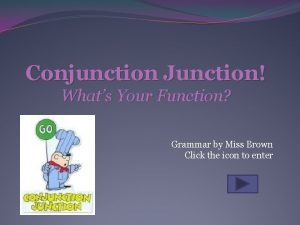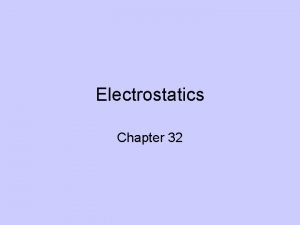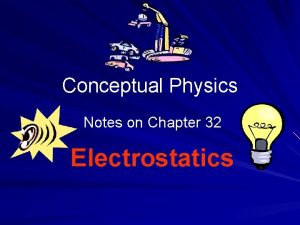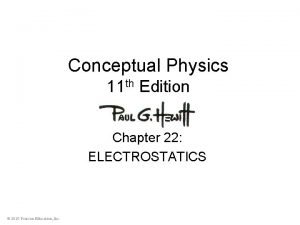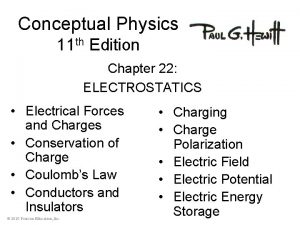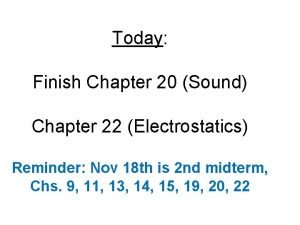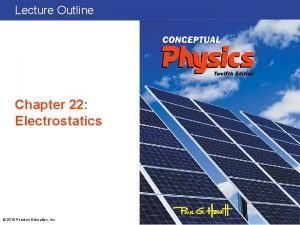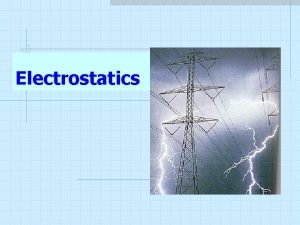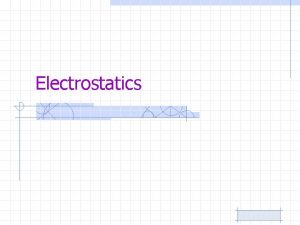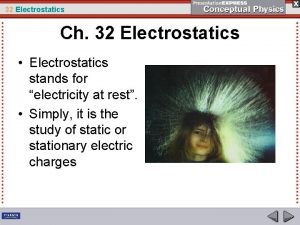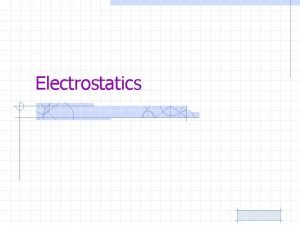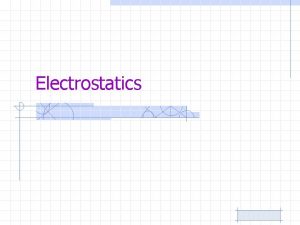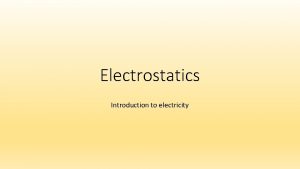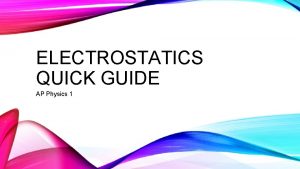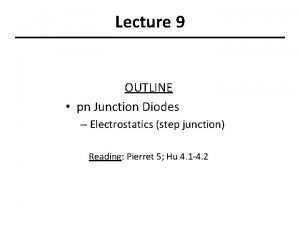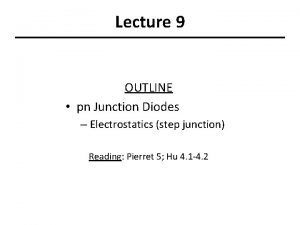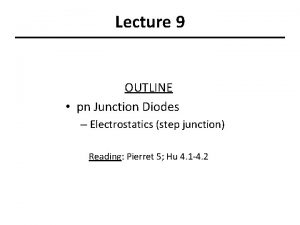Lecture 14 OUTLINE pn junction electrostatics Reading Chapter













- Slides: 13

Lecture #14 OUTLINE • pn junction electrostatics Reading: Chapter 5 Spring 2007 EE 130 Lecture 14, Slide 1

Qualitative Electrostatics Band diagram Electrostatic potential Electric field Charge density Spring 2007 EE 130 Lecture 14, Slide 2

“Game Plan” for Obtaining r(x), E(x), V(x) • Find the built-in potential Vbi • Use the depletion approximation (x) (depletion-layer widths xp, xn unknown) • Integrate (x) to find E(x) – boundary conditions E(-xp)=0, E(xn)=0 • Integrate E(x) to obtain V(x) – boundary conditions V(-xp)=0, V(xn)=Vbi • For E(x) to be continuous at x=0, NAxp = NDxn solve for xp, xn Spring 2007 EE 130 Lecture 14, Slide 3

Built-In Potential Vbi For non-degenerately doped material: Spring 2007 EE 130 Lecture 14, Slide 4

Vbi for “One-Sided” pn Junctions p+n junction Spring 2007 n+p junction EE 130 Lecture 14, Slide 5

The Depletion Approximation On the p-side, = –q. NA q. N d. E =- A es dx E ( x) = - q. N A es x + C 1 = -q. NA es (x + x p ) On the n-side, = q. ND E ( x) = Spring 2007 EE 130 Lecture 14, Slide 6 -q. N D es ( xn - x )

Electric Field in the Depletion Layer The electric field is continuous at x = 0 Spring 2007 N Ax p = N Dx n EE 130 Lecture 14, Slide 7

Electrostatic Potential in the Depletion Layer On the p-side: (arbitrarily choose the voltage at x = xp to be 0) On the n-side: Spring 2007 EE 130 Lecture 14, Slide 8

• At x = 0, expressions for p-side and n-side must be equal: • We also know that NAxp = NDxn Spring 2007 EE 130 Lecture 14, Slide 9

Depletion Layer Width • Eliminating xp, we have: • Eliminating xn, we have: • Summing, we have: Spring 2007 EE 130 Lecture 14, Slide 10

One-Sided Junctions If NA >> ND as in a p+n junction: What about a n+p junction? where Spring 2007 EE 130 Lecture 14, Slide 11

Example A p+n junction has NA=1020 cm-3 and ND =1017 cm-3. What is a) its built in potential, b)W , c)xn , and d) xp ? Solution: a) b) c) d) Spring 2007 EE 130 Lecture 14, Slide 12

Summary • For a non-degenerately-doped pn junction at equilibrium: – Built-in potential – Depletion-layer width • For a one-sided (p+n or pn+) junction at equilibrium: – Built-in potential – Depletion-layer width Spring 2007 EE 130 Lecture 14, Slide 13
 Whats a subordinating conjunction
Whats a subordinating conjunction Bipolar junction transistor lecture notes
Bipolar junction transistor lecture notes Chapter 32 electrostatics
Chapter 32 electrostatics Conceptual physics electrostatics
Conceptual physics electrostatics Conceptual physics chapter 22: electrostatics answers
Conceptual physics chapter 22: electrostatics answers Conceptual physics chapter 22 electrostatics
Conceptual physics chapter 22 electrostatics Chapter 22 electrostatics
Chapter 22 electrostatics Chapter 22 electrostatics
Chapter 22 electrostatics Pre reading while reading and post reading activities
Pre reading while reading and post reading activities 01:640:244 lecture notes - lecture 15: plat, idah, farad
01:640:244 lecture notes - lecture 15: plat, idah, farad Lecture outline example
Lecture outline example Lecture outline example
Lecture outline example Lecture outline example
Lecture outline example Lecture outline meaning
Lecture outline meaning
